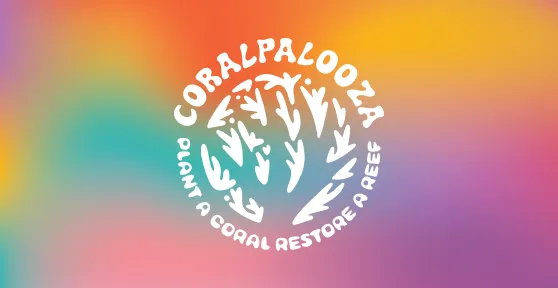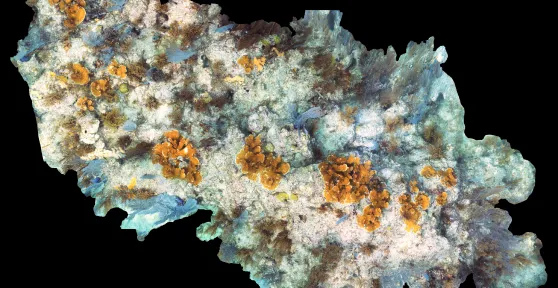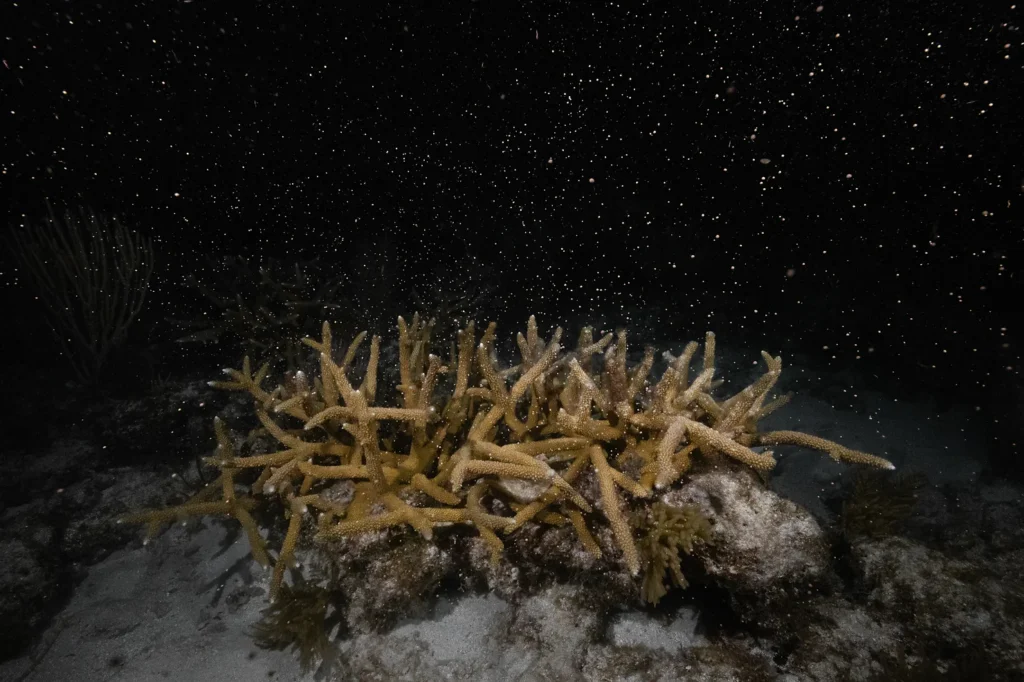
As Florida’s summer approaches its climax, Florida’s coral reefs are nearing their own pivotal moment: the annual coral spawn. This spectacular mass reproduction event can be observed just after the full moons of July and August.
However, local and global stressors have impacted coral populations in the Florida Keys, affecting these crucial spawning events. The overall lack of existing corals on reefs and high temperatures correlates with poor gamete quality and low gamete quantity, leading to unsuccessful fertilization of the coral spawn.
Spawning is essential for the long-term survival of reefs as it represents the primary way reefs self-sustain. At Coral Restoration Foundation™ (CRF™), we are upscaling our efforts to return Florida’s coral reefs to levels that ensure spawning corals can successfully seed reefs with new genetic strains. Without successful spawning, the survival of our critically endangered stony corals remains in limbo.
The Spawning Process
Stony corals, or scleractinian corals, reproduce sexually through a process called spawning. Corals, being sessile animals, have evolved to collectively release their genetic material in synchronicity to maximize the likelihood of fertilization and survival. Following cues from the lunar cycle, water temperature, and other factors, mature corals on reefs and within our nurseries simultaneously release their gametes into the water column with extraordinary coordination. This results in a blizzard of coral gametes, resembling a colorful tempest of genetic material that perpetuates coral survival and reef growth into the future.
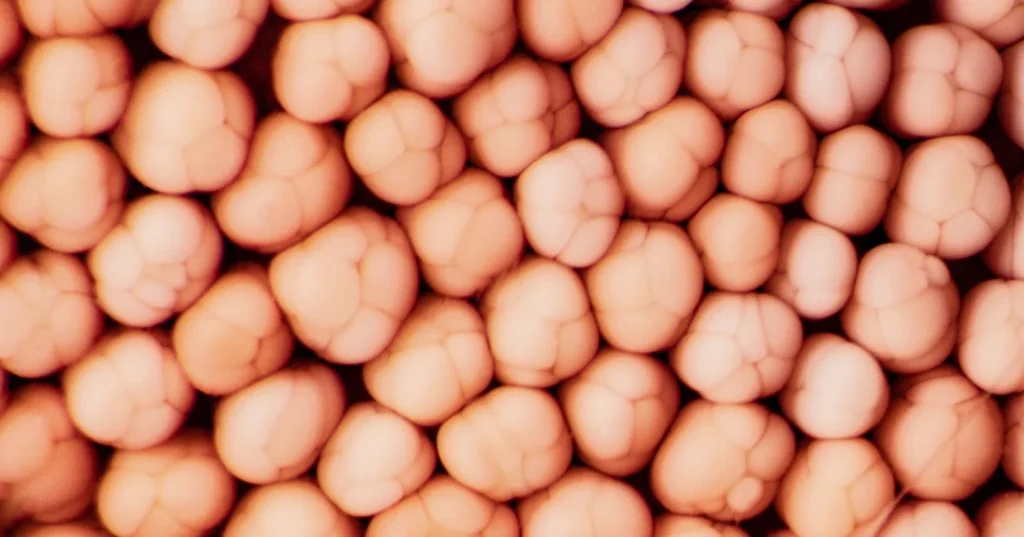
After their release, the coral gametes slowly rise to the surface where fertilization begins, forming free-swimming coral larvae, or planulae. These planulae swim through the water column for days to weeks before settling on the ocean floor, following biochemical cues such as the presence of crustose coralline algae and the acoustic sounds of a flourishing reef. With luck, the seafloor conditions and substrate material will allow them to attach and begin growing the skeleton that will serve as a permanent home for the corals and subsequently for the organisms they provide habitat for.
Monitoring and Research
Broodstock corals in CRF™ nurseries usually spawn every year, underscoring the health of our corals and providing a unique resource for coral research. Corals from our production stock are assessed for sexual maturity beginning in early July and continuing through the middle of August. These assessments are based on the size of the colony and the presence of gametes, determined by breaking a branch of the colony and looking for the small, white-pink gamete bundles inside the skeletons.
Once a colony has been confirmed as mature, it is moved to a spawning structure—a hangman-shaped post with a single branch that allows for the collection of the gametes during spawning. On predicted spawning nights, this year from August 21-25, we place a weighted net over the spawning structure and the colony. When the colony spawns, the gamete bundles are caught in the net and float upwards into the collection vial, from which we can then easily remove the vial with the gametes inside.
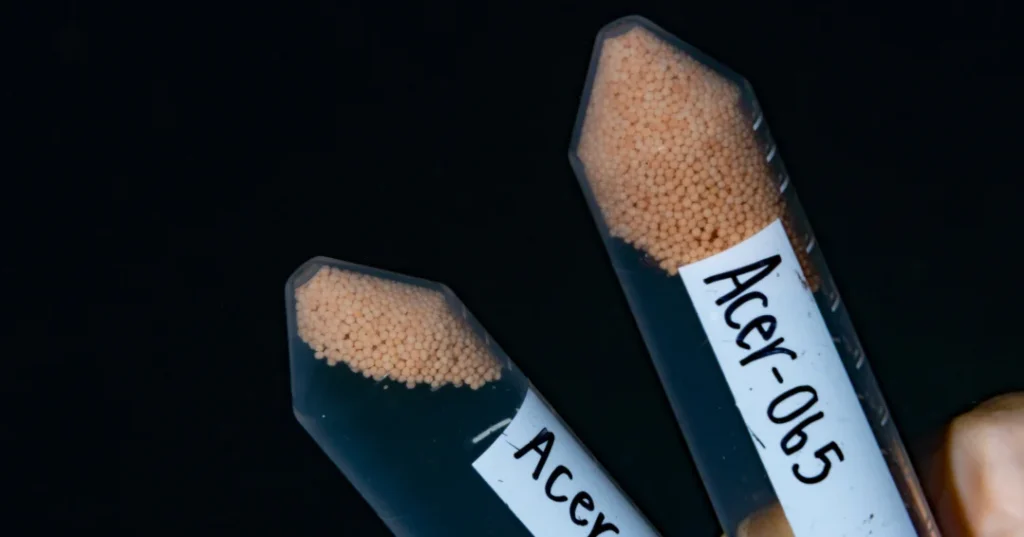
Gametes collected from our nurseries and outplant sites have been raised into corals in labs around the world, increasing genetic diversity and facilitating innovative research into coral sexual reproduction globally.
This year, one of our long-time collaborators, Dr. Linda Penfold from SEZARC, will be joining us to continue her work cryopreserving gametes from a variety of staghorn genotypes. This innovative approach enables the widespread distribution and preservation of delicate coral gametes not only for study but also for preventing local extinction.
Celebrate Underwater Romance With Us
This unique natural spectacle serves as a vital indicator of the health of our reefs and the restoration progress we have achieved. We invite you to join us at Vizcaya Museum and Gardens on August 21 for our Coral Spawning Celebration, where you can participate in interactive activities, learn more about the impactful work being done to protect our oceans, and celebrate the spectacle that is coral spawning.

Get your tickets here: https://www.eventbrite.com/e/vizcaya-late-coral-spawning-celebration-tickets-965175274227


